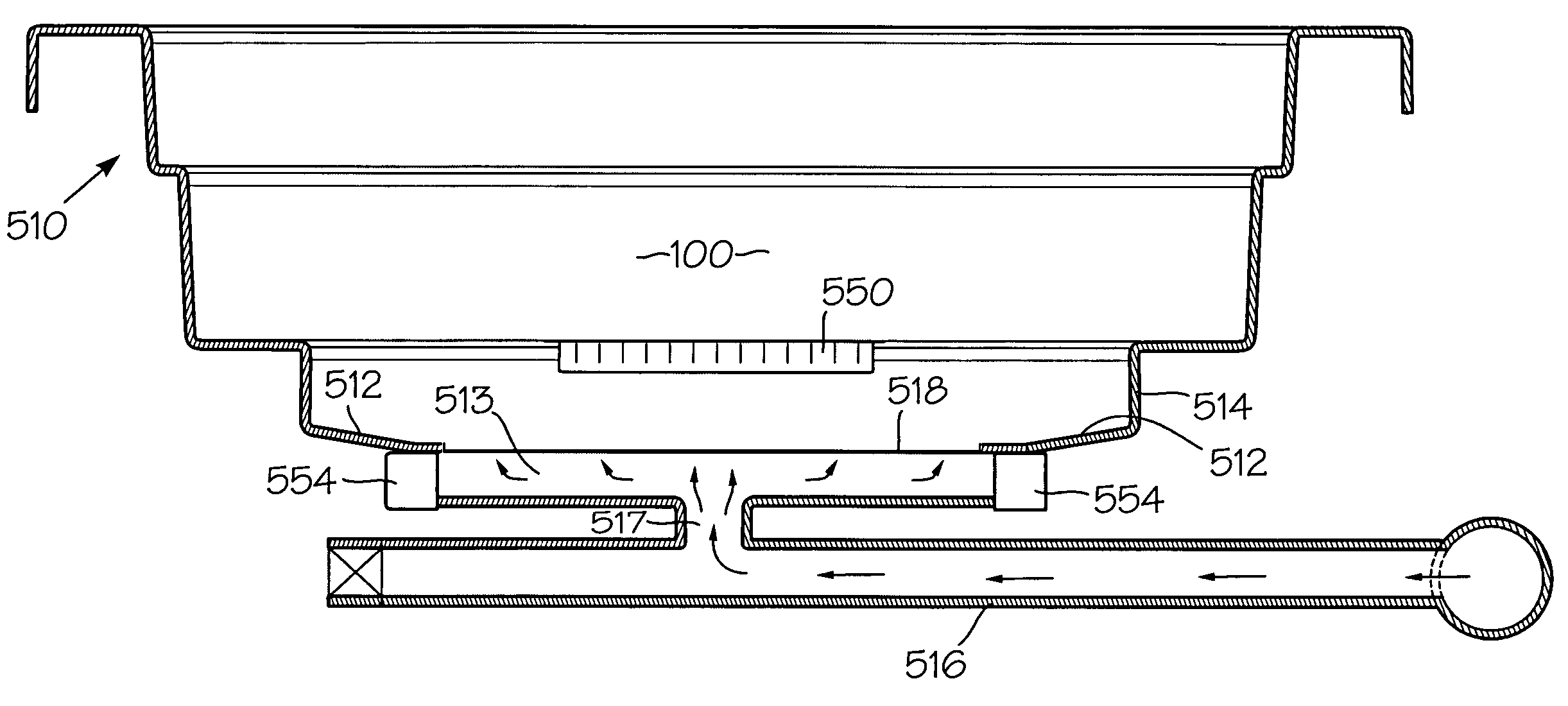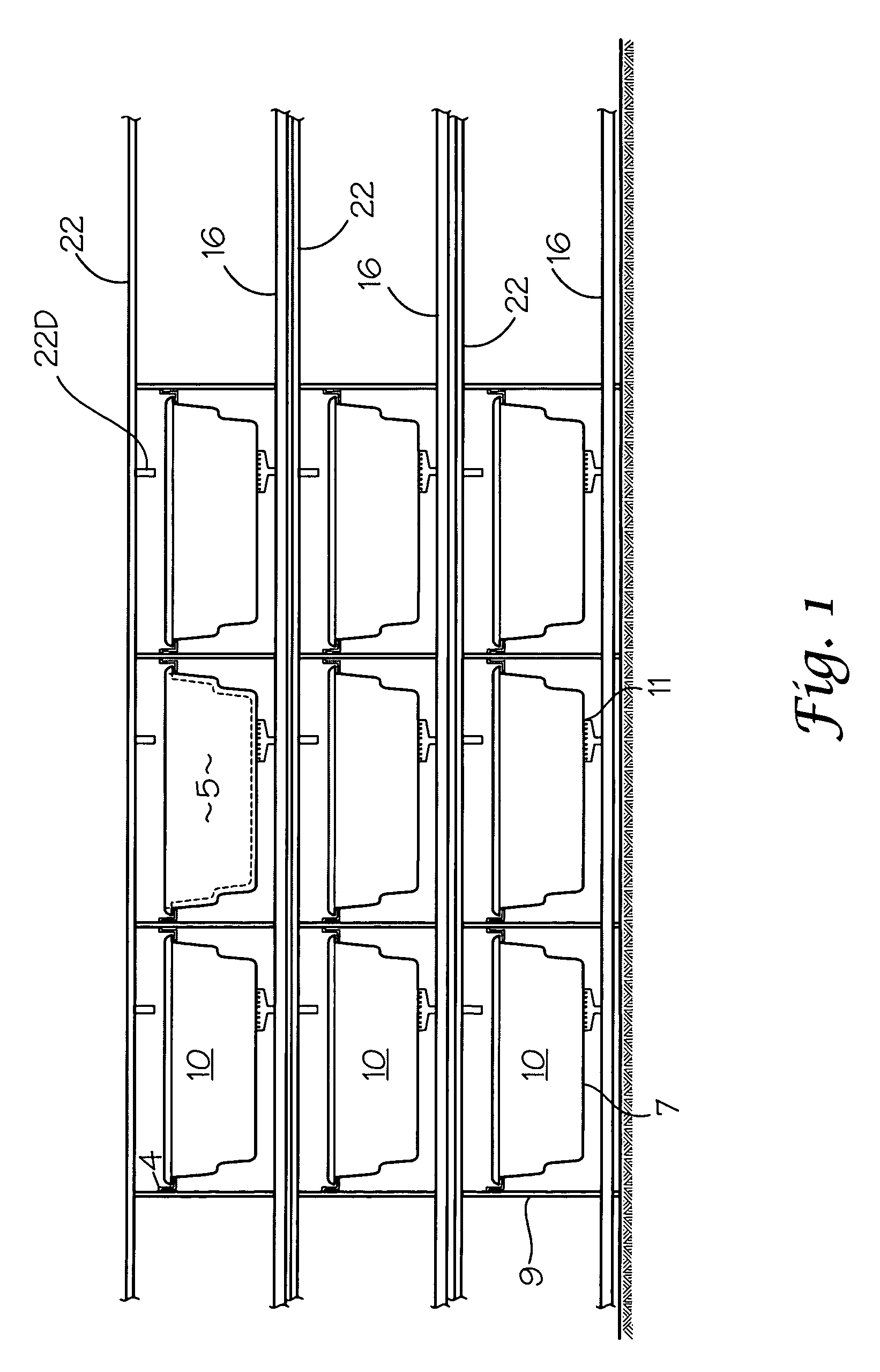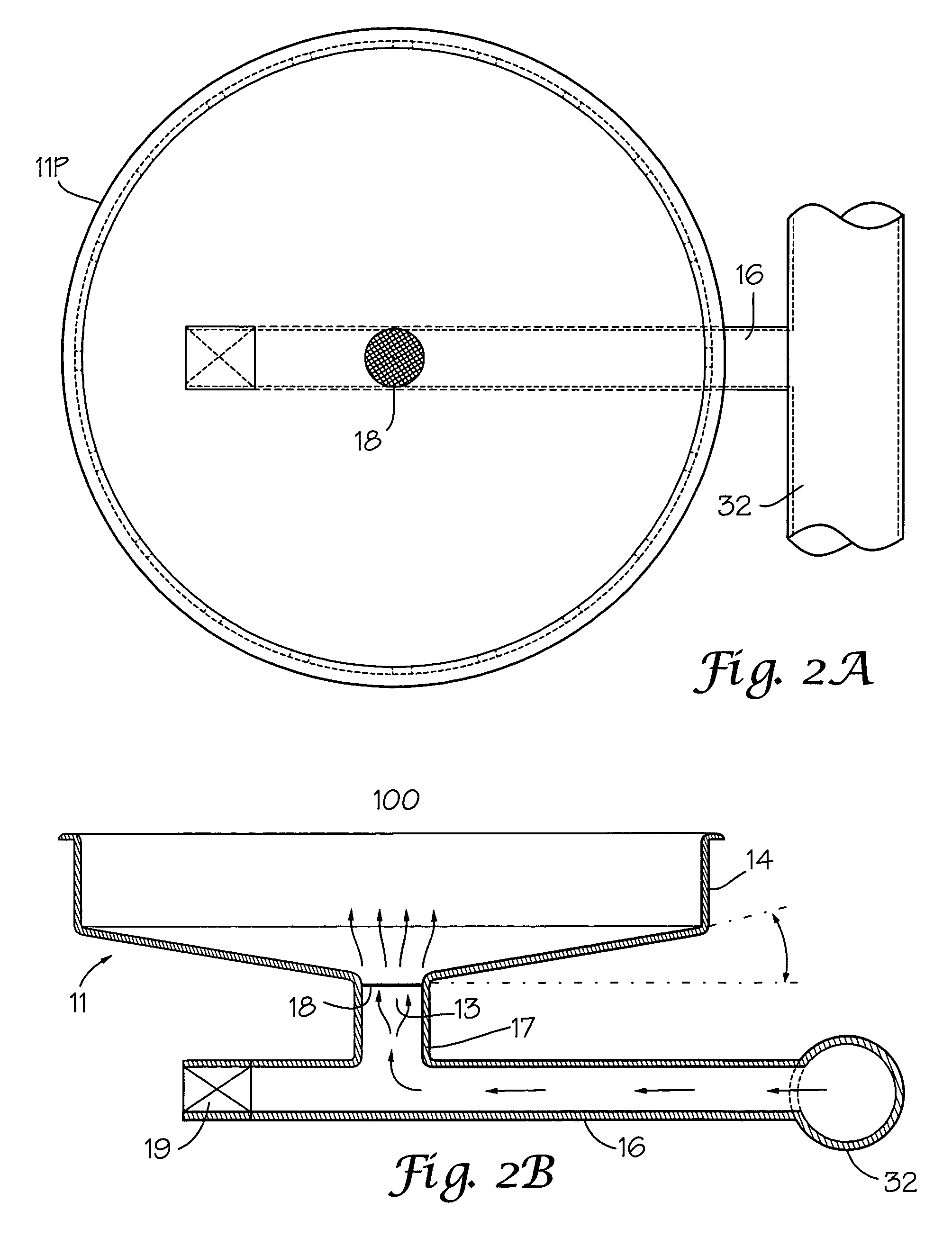Activated feed through, feeding systems incorporating same, and methods of use of same
a technology of activated feed and active suspension, which is applied in the field of amphibious animal cultivation, can solve the problems of wetting, breaking, and dispersing feed throughout the container, and achieves the effect of reducing mold feed and/or disease outbreak, and stimulating growth
- Summary
- Abstract
- Description
- Claims
- Application Information
AI Technical Summary
Benefits of technology
Problems solved by technology
Method used
Image
Examples
Embodiment Construction
[0022]Throughout the description of the invention, particularly the embodiments disclosed herein, it is appreciated that like numbers of components represent similar or identical structures. Also, as used throughout this disclosure, including the claims, “growing cubicle” and “cultivation container” are taken to mean a container having a bottom wall with a continuous upstanding side wall extending about the periphery of said bottom wall, of a size suitable for the cultivation in captivity of frogs and other amphibians. One or more of the side wall sections may be comprised of a mesh or screen, so long as the functionality of keeping captive the frogs or other amphibians is maintained. The two-dimensional shape of a cubicle is not limited to a square shape; cubicles may be rectangular, circular, and other shapes as desired. Other terms that are interchangeable with “growing cubicle” and “cultivation container,” when used in the proper context, are “container” and “vessel.” Also, whil...
PUM
 Login to View More
Login to View More Abstract
Description
Claims
Application Information
 Login to View More
Login to View More - R&D
- Intellectual Property
- Life Sciences
- Materials
- Tech Scout
- Unparalleled Data Quality
- Higher Quality Content
- 60% Fewer Hallucinations
Browse by: Latest US Patents, China's latest patents, Technical Efficacy Thesaurus, Application Domain, Technology Topic, Popular Technical Reports.
© 2025 PatSnap. All rights reserved.Legal|Privacy policy|Modern Slavery Act Transparency Statement|Sitemap|About US| Contact US: help@patsnap.com



